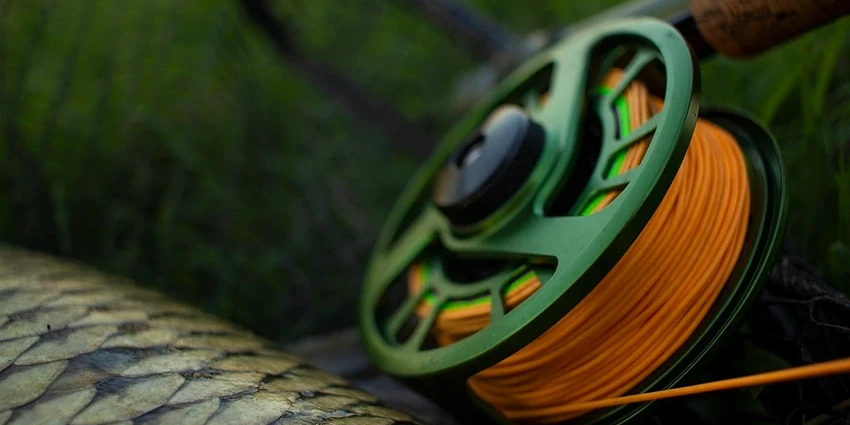All products were chosen independently by our editorial team. This review contains affiliate links and we may receive a commission for purchases made. Please read our affiliates FAQ page to find out more.
Carp fishing, a pursuit that combines skill, patience, and a touch of luck, has captivated anglers for generations. This article dives into the world of carp fishing, offering insights and strategies to help you outsmart these clever fish. Whether you’re a seasoned angler or just starting, these tips will enhance your carp fishing experience.
Jump to:
Essential Gear for Carp Fishing
Choosing the Right Equipment
Carp fishing demands specific gear to increase your chances of success. Additionally, choosing the right destination is crucial for a successful trip. Learn more about the best carp fishing destinations on our carp fishing destinations page. Here’s what you need to know:
- Rods and Reels: Opt for medium to medium-heavy spinning rods. A 10-pound braided fishing line paired with a 20-pound fluorocarbon leader line is ideal.
- Rigs: A 3-way rig connected to a medium-sized circle hook works best. Use a separate leader material to attach a sinker, keeping your bait at the bottom where carp feed.
Table: Recommended Carp Fishing Gear
| Gear Type | Description |
| Rods | Medium to medium-heavy spinning rods |
| Line | 10-pound braided line with 20-pound fluorocarbon leader |
| Rigs | 3-way rig with medium-sized circle hook |
Locating the Best Carp Fishing Spots

Understanding Carp Behavior
To find carp, you need to think like them. They prefer slow-moving or standing water in freshwater lakes, ponds, or rivers. Look for areas with overhanging tree branches, weed edges, or logs, as carp are attracted to structures offering food and protection.
Table: Ideal Carp Habitats
| Habitat Type | Features |
| Lakes | Overhanging branches, weed edges |
| Rivers | Inlets and outlets, areas with consistent food sources |
Advanced Carp Fishing Techniques
Adapting to Different Environments
Carp fishing tactics vary based on the environment. Here are some strategies:
- Stalking: This involves quietly moving around and casting to fish you can see.
- Surface Fishing: Ideal for warm, calm days when carp feed on the surface.
- Long-Range Casting: Useful in large lakes where carp may be feeding at a distance.
Table: Carp Fishing Techniques by Environment
| Environment | Technique |
| Clear, shallow waters | Stalking |
| Warm, calm days | Surface fishing |
| Large lakes | Long-range casting |
Carp Bait Secrets
Choosing the Right Bait
The bait you choose can make or break your carp fishing trip. Canned corn and dough balls are popular choices. However, always check local regulations to ensure these baits are permitted.
Table: Effective Carp Baits
| Bait Type | Description |
| Canned Corn | Easily available and attractive to carp |
| Dough Balls | Homemade option, can be customized with flavors |
Register for our latest in-depth reviews and product round-ups from the experts
Enter your email address below to receive our twice monthly reviews emails.
By entering your details, you are agreeing to our terms and conditions and privacy policy. You can unsubscribe at any time.
Setting Up the Perfect Carp Fishing Rig
Hair Rig: The Game Changer
The hair rig, a European innovation, is a game-changer in carp fishing. It involves attaching the bait to a short trace of leader material, extending beyond the hook. This technique tricks the carp into engulfing the bait without immediately sensing the metal of the hook.
Table: Components of a Hair Rig
| Component | Description |
| Leader Material | Short trace extending beyond the hook |
| Hook | Small, short shank designed for steelhead |
| Sinker | Heavy enough to create resistance |
Weather and Seasonal Impact on Carp Fishing
Understanding the weather is crucial for planning a successful carp fishing trip. Learn more about how different weather conditions affect carp behavior in our detailed article on carp fishing weather conditions.
Adapting to Seasons
Carp behavior changes with seasons. In spring and summer, they’re more active, making them easier to catch. During colder months, carp become sluggish, requiring more patience and refined techniques. For those seeking variety in their winter fishing strategies, exploring options like bass fishing from boats can provide a rewarding challenge in these conditions.
Table: Seasonal Carp Fishing Strategies
| Season | Strategy |
| Spring/Summer | Active feeding, surface techniques |
| Fall/Winter | Slower, deeper fishing methods |

Carp Fishing Etiquette and Conservation
Responsible Practices
As anglers, it’s our duty to practice responsible fishing. This includes catch and release, respecting local regulations, and being mindful of the environment.
Table: Carp Fishing Etiquette
| Practice | Importance |
| Catch and Release | Ensures sustainability of carp populations |
| Respecting Regulations | Adhering to local fishing laws |
| Environmental Care | Preserving habitats for future generations |
Frequently Asked Questions
Corn and dough balls are highly effective. Carp are attracted to their sweet smell and visibility.
Carp are more active in warmer temperatures, making them easier to catch. In colder weather, they become sluggish, requiring different tactics.
Yes, but specialized gear like medium-heavy rods and hair rigs can enhance your experience.







